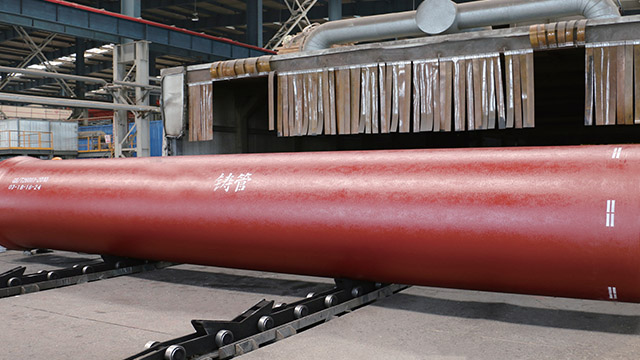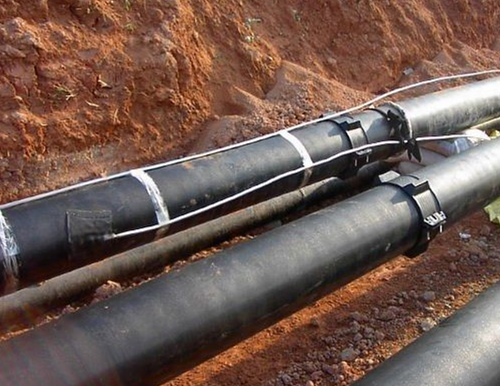How to Select Cast Iron Plumbing Pipe And Fittings?
2025-01-14 16:50:34 hits:0
In the building water supply and drainage system, the selection of cast iron plumbing pipe and fittings is of utmost importance. Their quality and applicability are directly related to the operational efficiency, service life, and safety of the entire system. The following are the key factors to consider when making a selection.

Material Characteristics as the Foundation
Cast iron water supply and drainage pipes mainly come in types such as gray cast iron and ductile cast iron. Gray cast iron pipes generally have a tensile strength of around 200MPa. They possess a certain degree of strength and corrosion resistance, and their relatively low cost makes them commonly used in gravity - flow drainage systems where the pressure requirements are not extremely high. Ductile cast iron pipes and fittings, due to the spherical distribution of graphite, have significantly improved mechanical properties. Their tensile strength can reach over 400MPa. They feature high strength, high toughness, and excellent corrosion resistance, being capable of withstanding high internal pressure and external loads. Thus, they are suitable for water supply systems and drainage systems with high - pressure requirements. For example, in urban water supply pipe networks, the main pipes often adopt ductile cast iron pipe to withstand greater water supply pressure. When choosing, the appropriate material should be determined based on the actual usage scenarios, such as pressure and water quality conditions.
Matching Specification Sizes
Based on the designed flow rate, flow velocity of the water supply and drainage system, and the building's usage function, accurately selecting the pipe diameter is crucial. If the pipe diameter is too small, it may lead to poor water flow and insufficient water pressure, affecting normal use. Conversely, if the pipe diameter is too large, it will cause material waste and increased costs. Also, attention should be paid to the pipe wall thickness, which is directly related to the pipe's pressure - bearing capacity and service life. Different application scenarios and pressure levels require different wall - thickness standards. For instance, for a DN100 ductile cast iron pipe, the nominal wall thickness is generally between 6.1 - 9.0mm. When used in outdoor buried water supply pipe networks, the wall thickness may need to reach around 9.0mm to ensure its pressure - bearing capacity. Selection must be carried out strictly in accordance with design specifications. For fittings such as elbows, tees, and crosses, their specification sizes also need to be fully compatible with the pipes to ensure the tightness of the connection and the smooth flow of the system.
Quality Control is Indispensable
High - quality cast iron soil pipe and fittings and fittings should have a smooth and flat surface without defects such as sand holes, air holes, and cracks. The appearance of the pipes can be inspected to check for obvious flaws. Additionally, when tapping the pipes, if a clear and uniform sound is emitted, it usually indicates that the material is relatively dense and of good quality. If the sound is dull and hoarse, there may be internal defects. For important projects, suppliers can also be required to provide product quality inspection reports, such as chemical composition analysis (for ductile cast iron pipes, the carbon content is generally between 3.6% - 4.0%, and the silicon content is between 2.0% - 3.0%) and mechanical property test reports, to ensure that the products meet relevant standards.
Connection Methods Need to be Appropriate
Common connection methods for cast iron water supply and drainage pipes include socket - and - spigot connection, flange connection, and clamp connection. Socket - and - spigot connection is relatively simple to operate and has good sealing performance, making it suitable for places with small - diameter pipes (generally with a diameter below DN100) and limited installation space. Flange connection has high strength, is convenient for disassembly and maintenance, but has a relatively high cost. It is mostly used in parts that require frequent maintenance or have high requirements for connection strength, such as the main water supply and drainage pipes in large industrial plants. Clamp connection is quick to install and highly flexible, suitable for projects with high construction speed requirements. The connection time of a single clamp can be saved by about 50% compared to flange connection. When choosing a connection method, various factors such as the installation location of the pipes, the usage environment, and construction conditions should be comprehensively considered to ensure that the connection method is compatible with the pipes and fittings, guaranteeing the tightness and stability of the system.
In conclusion, the selection of cast iron plumbing pipe and fittings requires a comprehensive consideration of multiple aspects such as material, specification, quality, and connection method to ensure that the actual needs of the water supply and drainage system are met and to provide a reliable guarantee for the safe water use and drainage of buildings. Tiegugu, as a professional casting product manufacturer and provider, focuses on the production and supply of cast iron drainage pipes and fittings. With rich experience and excellent technology, we are committed to providing high - quality products to global customers. Here, we sincerely welcome global purchasers to contact us for cooperation negotiations and jointly create brilliance.


 en
en  fra
fra  de
de  ru
ru  gle
gle  th
th  ara
ara  it
it  jp
jp  kor
kor  zh
zh 


